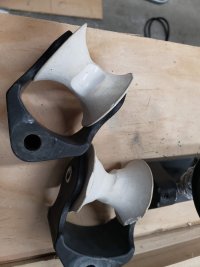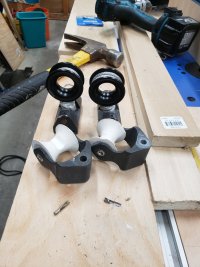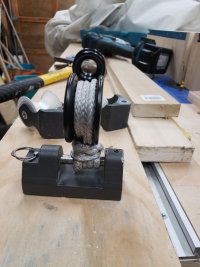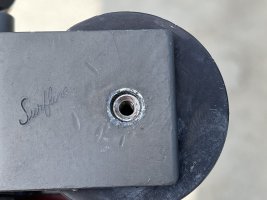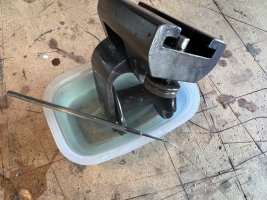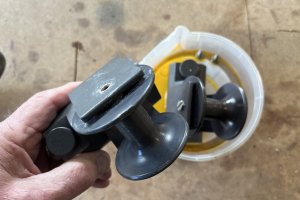
They're "Surfline" twin genoa sheet blocks. I've been able to keep them turning by periodic lube, but apparently missed the window once too often. The sheaves are stuck. I've tried soaking for days in PB Blaster, soaking in hot water detergent, heat gun, tapping with hammer, pounding with hammer, clubbing hard enough for a baby seal.
But they're history, frozen irredeemably. Never heard of Surfline fittings, and although nicely machined these were apparently designed with tolerances too close for the yachting environment. Oh well.
I've lost several fittings to stainless/aluminum corrosion welding: an outhaul slug in a boom channel, a pedestal guard corroded to the YS binnacle connector plate, and lesser components too. Tef-Gel solves the issue for new installations. Otherwise it is necessary to pay attention and manipulate the fitting periodically, as we have all learned as the only way to keep our headliner zippers alive.
"A stitch in time saves nine."

